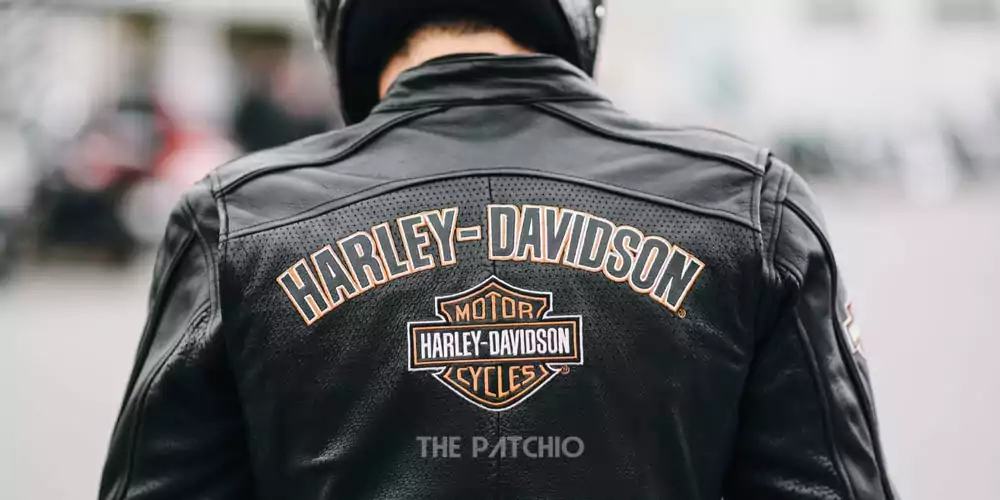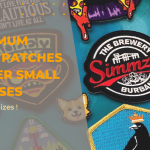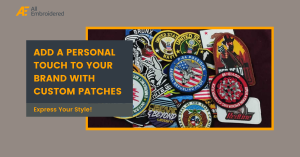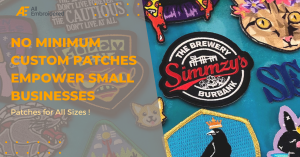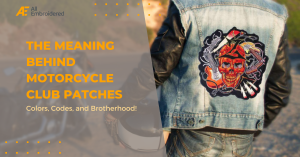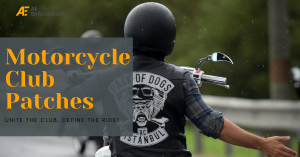The quintessential motorcycle culture icon is a sense of freedom, deserted roads, and revving engines. However, the distinctive biker patches on their leather jackets and vests are another feature that immediately draws in any ardent motorcyclist. The rich history of motorcycle club patches is defined by these embroidered symbols, which also tell tales and highlight affiliations.
If you want to learn more about the rich history of motorcycle patches and their intriguing world, come along.
Motorcycle Patches’ Intimate Past
The History Of Including A Touch Of Personality
When motorcycle riders banded together to form organizations in the early 1900s, motorcycle patches were born. They stood for a sense of fraternity, common ideals, and a love of motorcycles; they were more than just a social event. In order to set themselves apart from other groups, they also began donning unique biker patches that featured club names, emblems, or slogans. The participants developed a sense of pride and belonging as well as a hint of identity thanks to the motifs.
MC Colors’ Modification for a Visual Identity
Motorcycle clubs started using “colors” for their badges in the 1940s, and members wore several to symbolize various facets of their organizations. The club’s name was displayed on the main patch, known as the “top rocker,” and the organization’s logo was displayed on the central symbol, also known as the “club badge.”
The area or territory was represented by the “bottom rocker.” These symbols combined to create the recognizable three-piece “colors” that members wore. Motorcycle clubs were able to create a presence and foster community cohesion because of their visual identity.
Outlaws’ Ascent And The Legacy Of The 1%
Beginning in the 1960s, outlaw motorcycle gangs like the Hells Angels and the Outlaws emerged as rebellious groups. They wear biker patches to show off their rebelliousness. In order to symbolize their status as the minority that lived outside the law, outlaws frequently sported a “1%er” patch. The outlaws are dedicated to living according to their own terms and rejected social conventions. The 1%er Legacy has gained a lot of popularity among motorcycle enthusiasts.
Military Insights to Promote Service and Fraternity
Motorcycle patches have been heavily impacted by military insignias in addition to the one percenters. Veterans and members of the armed forces make up a large portion of biker club members. These people frequently show their affiliation with the armed forces by wearing clothing with themed badges.
They decorate flags, patriotic emblems, and insignias that symbolize military-style status. Additionally, they honor their service and the common ideals of loyalty, honor, and fraternity.
Badges with military themes serve as a reminder of the sacrifices made and the enduring relationships formed while serving. Additionally, they are an extension of the motorcycle community’s excitement, which aids veterans in finding a sense of camaraderie.
The Creation of Badges to Honor Accomplishments and Experiences
Members of motorcycle clubs show off their hobbies, achievements, and experiences in addition to wearing motorcycle club patches to symbolize their affiliation. In addition to honoring significant occasions or turning points in their riding careers, their badges frequently feature amusing slogans. These badges turn into a mark of honor, whether you’re at a historic rally or finishing a cross-country journey.
The Start of Dismantling Barriers and Honoring Sisterhood
Since its inception, motorcycle culture has historically been dominated by men. But for many years, women have been paving the way and shattering stereotypes in this society. In addition to wearing symbols of female empowerment, sisterhood, and the celebration of female riders, they have established women’s motorcycle groups. These symbols foster a feeling of camaraderie and encourage more women to take up motorcycling. Women-themed biker patches typically feature inspirational quotes, feminine emblems, or distinctive patterns that highlight the resilience of female riders. They act as a tangible symbol of women’s solidarity and support. By dispelling prejudices, these insignias inspire women to follow their love of riding. It motivates them to carve out a niche for themselves in the historically male-dominated biker culture.
